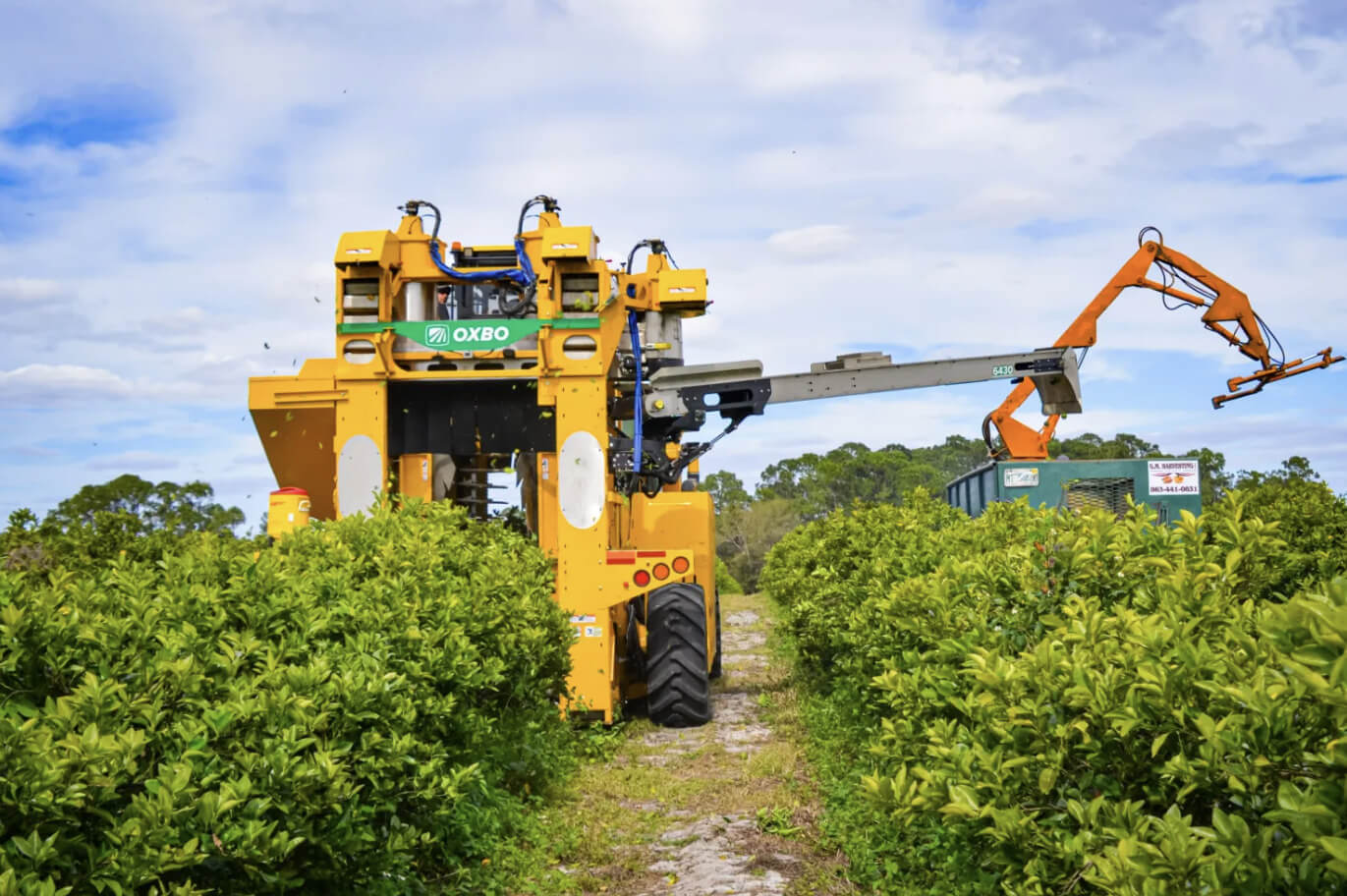Sustainability in citrus relies on productive intensification and the hedgerow model.
Genetic improvement, low-vigor trees, and high-density planting frames for sustainable production of citrus at both environmental and economic levels.
Producing sustainably in a scenario with labor shortages, water scarcity, or significant pest and disease pressures is the main challenge faced by fruit and vegetable producing countries. These are challenges where new varieties, mechanization, and resource optimization are key to achieving the coveted sustainability demanded today— not just environmental, but also economic and social sustainability.
Therefore, Agromillora Group—a global company dedicated to nursery plant production of woody species like peach, apple, pear, olive, and vine, which aids producers in improving their efficiency—has been working for years on implementing a revolutionary cultivation system to redefine the sector and achieve the goal of a modern, more profitable, and sustainable agriculture: the Super High Density model.
Without reducing canopy productivity per cubic meter, the SHD model is more efficient as it cuts costs, requires less water, and facilitates mechanized harvesting, thereby reducing labor needs
But what does this model entail? Ignasi Iglesias, Technical and Development Director at Agromillora, explains that the hedgerow model is based on genetically improving low-vigor rootstocks and high-density planting frames, resulting in “smaller and more efficient canopies.”
The first hedgerow plantings emerged in the 1970s with the dwarfing apple rootstock M9. Later, in the 1980s, a low-vigor pattern was also developed for pears. However, it was in the 1990s when Agromillora carried out the first olive grove planting in hedgerow, a cultivation technology that has also been extended to stone fruits. This model has begun to generate increasing interest in the citrus sector.

It’s nearly impossible to interrupt Ignasi when he begins detailing the various advantages of this model. “Firstly, smaller canopies are more efficient because they distribute light and carbohydrates better, ensuring fruits receive all nutrients,” he starts emphasizing. “A tree with lower vigor also translates into a proportional reduction in pesticides, where we can go from 1,400 or 1,500 to 700 or 800 liters per hectare of spray. That’s roughly a 50% reduction in pesticide costs.” And he continues. “Furthermore, since the canopy is about half the size, water consumption is also lower due to reduced evapotranspiration, and fertilizer use is minimized as good productivity reduces nutrient needs.” But here he pauses. “All of this is crucial for farm viability; however, there’s an indispensable factor for current and future sustainability in citrus cultivation and agriculture overall: labor.”
A critical point: labor, increasingly scarce and with rising costs. “The smaller canopy volume facilitates tasks like pruning or harvesting without the need for ladders or even fully mechanizing fruit collection with riding harvesters,” explains Ignasi. He further notes, “In pedestrian systems, labor costs are around 6 cents per kilogram for harvesting, whereas with larger trees, it increases to 9 or 10 cents. Efficiency in harvesting increases by 30 to 40% by harvesting the majority from the ground.” These advantages, as mentioned earlier, address the primary challenges of present and future agriculture.
“The smaller canopy volume facilitates tasks such as pruning or harvesting without the need for ladders, and even allows for complete mechanization of fruit collection using riding harvesters… Efficiency in harvesting increases by 30 to 40% by collecting the vast majority from ground level.”
“After presenting all these reasons,” he concludes, “our proposal at Agromillora is based on genetic improvement, in this case using the CIVAC-19 rootstock, which allows for reduced canopy volume and intensification.” He proposes two options: “the high-density model, with 4 x 1.5 meter spacing, featuring smaller trees enabling ground harvesting or using a riding harvester, and the medium-density model, with 5 x 2 meter planting spacing, designed for manual harvesting.
However, several doubts arise after hearing this proposal, which initially sounds promising. Since the tree is smaller… does it produce less? And how can it be that if this model offers such advantages, it wasn’t considered earlier for citrus cultivation?

Regarding the production volume with smaller trees, he tells us that “after working several years with this model at Embrapa (Brazilian Agricultural Research Corporation), the data extracted show that canopy productivity per cubic meter is nearly the same.” Agromillora’s Technical Director chuckles. “It may seem surprising, but it’s true — and he continues — why? Because the canopy is more efficient. Because light is better distributed, and carbohydrates are channeled more to the fruits rather than leaves and trunk. This explains why we talk about sustainable intensification, because sustainability of inputs, labor, water, etc., is only achievable in citrus when trees are smaller and plantations are intensified.” He acknowledges, however, that fitting more trees per hectare means plantation costs are two to three times higher than conventional setups, but “trees fill the space faster, thus we produce faster, so economic returns are quicker, besides having a more efficient tree for 15 to 20 years.”
“It may seem surprising, but it’s true — and he continues — why? Because the canopy is more efficient. Because light is better distributed, and carbohydrates are channeled more to the fruits rather than leaves and trunk. This explains why we talk about sustainable intensification, because the sustainability of inputs, labor, water, etc., is only achievable in citrus when trees are smaller and plantations are intensified.”
Regarding the implementation of the hedgerow model in citrus cultivation, Ignasi attributes its delay to the classic saying “things don’t change until there’s a need.” He begins with the example of apple trees: “40 years ago, the price of apples was very low and didn’t cover labor costs, so there was no choice but to switch to smaller trees to make everything easier. The same has happened with citrus. Until now, producers were making a good living and the numbers added up, but with recurring problems of less available and increasingly expensive labor, the question arises: Can I do something different? Because labor is the problem of today and tomorrow, and a smaller canopy allows for almost entirely mechanized harvesting, making the plantation much more efficient.”

“Some producers have already started with this model. We’re not starting from zero, we’re starting with a lot. We began work with Ifapa and already have several commercial estates in Andalusia, as well as in Italy, in the Bari area. Anyone interested can see it firsthand with the data. It’s about seizing the moment. Has the time come to renew my plantation? Well, I think and do something different,” Ignasi concludes.
The technical director of Agromillora concludes by affirming that “sustainability in citrus cultivation lies in intensification. If we don’t talk about smaller trees, if we don’t intensify, we can’t talk about sustainability. And we talk about sustainability in two aspects: environmental, because we use fewer resources, and economic, because we reduce costs and it’s more profitable for the producer.”
Interview conducted by Julia Luz, source: Valencia Fruits







